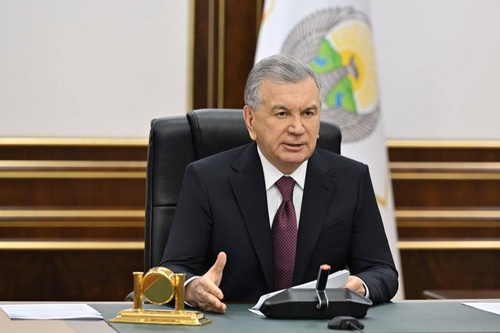The vast resources of the Tashkent region serve as a foundation for investment and job creation.
On December 10, President Shavkat Mirziyoyev held a meeting focused on the effective utilization of untapped opportunities, the increase of job creation, and the inflow of investments in the Tashkent region.
The Tashkent region has immense potential across various sectors—including industry, agriculture, services, and tourism. Over the past seven years, the region's economy has grown by 1.5 times, and the number of industrial enterprises has doubled, reaching 12,000.
However, the existing opportunities are not fully utilized. For instance, only 25 percent of the region's land is used for agriculture. Income levels per hectare remain lower than in other regions. In cities like Bekabad and Akhangaran, as well as in the Akkurgan, Chinaz, and Piskent districts, the processing of agricultural products is at a very low level. Food security and the export of fruits and vegetables also do not align with the region's potential.
During the meeting, which was held in a critical atmosphere, measures were proposed to enhance land use efficiency. Specifically, every cluster, as well as farmer and dehkan farms, will be integrated into the "Agroplatform" information system. This system will include data on sown areas, production volumes, the number of workers, and tax revenues. Next year, in seven districts specializing in fruits and vegetables, a three-time harvest is planned over an area of 52,000 hectares. Additionally, industrial gardens and vineyards will be established on 5,000 hectares.
Overall, lands in 22 districts and cities of the region will be connected to processing and export enterprises. It was noted that this would allow for the collection of 3.5 million tons of fruits and vegetables next year, with exports valued at 500 million dollars.
The infrastructure and logistics of the Tashkent region are favorable for entrepreneurship. However, over the past three years, the area of production, trade, and service facilities has increased by only 1.6 million square meters, which is 3.5 times less than in the capital. Of the 9,000 hectares of land allocated for investment projects, 2,000 hectares remain unused. Several state facilities are idle.
Meanwhile, investors have expressed interest in building a "smart city," a medical cluster, and "green" power plants in the region. Thousands of entrepreneurs from the capital and other regions are seeking sites for business expansion, new enterprises, hotels, and trade and tourism complexes.
Deficiencies in the relevant work of the Agency for State Asset Management and responsible officials in the region were highlighted. Instructions were given to auction buildings and land under favorable conditions for entrepreneurs, as well as to increase investment volumes, create new jobs, and boost exports through these projects.
The governor of the Tashkent region presented plans for the next year to attract 5 billion dollars in investments and increase exports to 2 billion dollars.
The head of state noted that half of the anticipated investments are planned to be directed towards already developed cities—Almalyk, Angren, Chirchik, and the Akhangaran, Zangiata, and Kibray districts. In this regard, it was emphasized that additional projects need to be developed in relatively lagging areas such as Akkurgan, Bekabad, Buka, Parkent, Piskent, Kuyichirchik, and Chinaz to create new jobs.
It was stressed that the potential of the Tashkent region could lead to increased incomes for the entire population. The goal is to ensure the employment of 700,000 people next year, reduce the unemployment rate to its natural level, lift 22,000 families out of poverty, decrease the poverty rate from the current 7.2 to 4 percent, and provide jobs for labor migrants returning from abroad.
The president also spoke with the entrepreneurs from the region participating in the meeting. He paid special attention to their proposals and initiatives, providing relevant instructions to the responsible officials.


